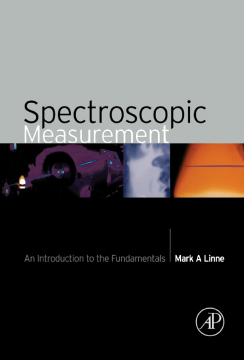
Additional Information
Book Details
Abstract
Electromagnetism, quantum mechanics, statistical mechanics, molecular spectroscopy, optics and radiation form the foundations of the field. On top of these rest the techniques applying the fundamentals (e.g. Emission Spectroscopy, Laser Induced Fluorescence, Raman Spectroscopy). This book contains the basic topics associated with optical spectroscopic techniques. About 40 major sources are distilled into one book, so researchers can read and fully comprehend specific optical spectroscopy techniques without visiting many sources.
Optical diagnostics are widely used in combustion research. Ideas first proposed here are now applied in other fields, including reacting flows for materials production (CVD reactors, oxidation reactors and some plasma work), atmospheric sensing, measuring constituents of exhaled human breath (to indicate stress in airway passages and the lungs and hence,e.g., provide a very early indicator of lung cancer).
Researchers not formally trained who apply spectroscopy in their research need the detail in this book to ensure accuracy of their technique or to develop more sophisticated measurements.
Time is valuable and future research will benefit. Learning "on the fly" can involve direct information on a specific diagnostic technique rather than gaining the background necessary to go into further depth.
"Spectroscopic Measurements: An Introduction to the Fundamentals by Mark A. Linne is the place where you find – and understand – key ingredients of modern combustion diagnostics. For many applications, optical diagnostics play an increasingly important role. However, only the most basic descriptions of the underlying physics are often found in journal articles or textbooks, providing little guidance to the graduate student or the combustion engineer who may wish to familiarize himself or herself with the quantitative aspects and procedures. For this purpose, Linne's book is a top address to review physical principles and necessary equations in a concise and well-organized form. I have used material from this book in an advanced spectroscopy class and found it a valuable complement to textbooks on spectroscopy and reviews on combustion diagnostics.
If you are the one to actually perform and evaluate a diagnostics experiment in a complex system like a combustion device, you will appreciate this book as a condensed reference for the related physics machinery – a first-of-its-kind document which guides you through the necessary steps and which spares you to convert formalisms from many different sources."
Katharina Kohse-Höinghaus, Professor of Physical Chemistry, Bielefeld University, Germany
